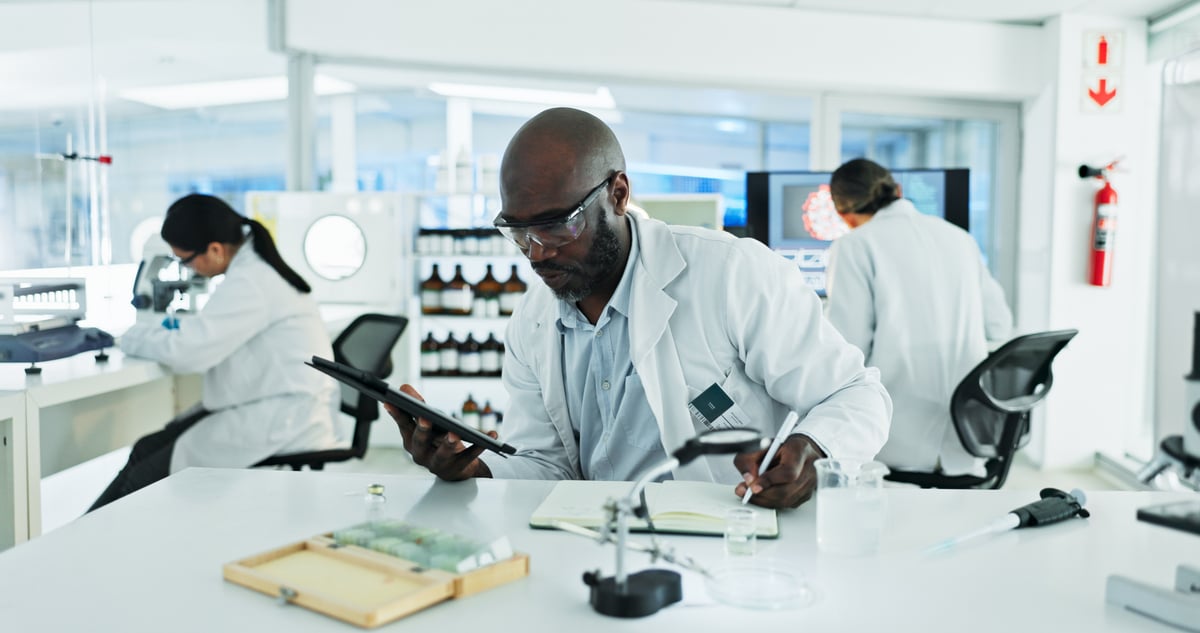Great businesses have a habit of remaining so even when market volatility arises. The stock market is cyclical, and ups as well as downs are inevitable. When you only buy stocks that you have strong convictions about as long-term investments (based on sound research, your financial goals, and proper risk tolerance), you can hold onto those companies through the downturns and benefit during the bull periods.
While the stock market has been on a strong winning streak recently, you should only be putting cash into stocks that you want to hold for at least three to five years. Dividend stocks can be a great way to boost your returns through time, both with share-price appreciation and with consistent payouts that you can save or reinvest as you like.
If you have cash to invest right now that you don't need for bills or other financial obligations, here are three dividend healthcare stocks to consider for your next round of investments.

Image source: Getty Images.
1. Eli Lilly
Eli Lilly (LLY +0.07%) has been paying a dividend in some form since 1885. And while the yield is below 1% right now, that's partly a function of the stock's incredible total return of more than 400% over the last five years. The company has garnered plenty of interest from investors during that period thanks to its GLP-1 franchise. The success of Mounjaro and Zepbound has certainly ushered Lilly into a new era of growth, and shareholders have benefited in the process.
Although shares dipped after the company's first-quarter earnings release -- partly due to lowered profit expectations because Novo Nordisk secured a preferred listing deal with CVS Health for its rival GLP-1 weight loss drug -- this is still a rock-solid company with a robust growth runway ahead. Eli Lilly was one of the oldest and leading drugmakers in the world before Mounjaro and Zepbound, and it already had an established presence in the diabetes-care space.
In fact, Lilly was a pioneer in insulin production, becoming the first company to mass-produce and commercially sell insulin in the U.S. with its product called Iletin in 1923. It later developed Humulin, the first biosynthetic human insulin, which was approved in 1982 and further solidified Lilly's position in diabetes care.

NYSE: LLY
Key Data Points
Aside from its current blockbuster GLP-1 portfolio, which helped deliver revenue just shy of $13 billion (up 45% year over year) in Q1 alone, Eli Lilly boasts more top-selling portfolio makers. Other notable drugs include Trulicity (for diabetes), Verzenio (a breast cancer drug), and Taltz (for psoriasis and related conditions). Newer additions to the company's portfolio include Omvoh, for inflammatory bowel disease, and Kisunla for Alzheimer's disease.
Watch for updates on Lilly's next-gen GLP-1 drug, orforglipron, an oral, small-molecule medication that's being studied for both weight loss and diabetes treatment. The drug is now in seven separate late-stage trials for diabetes and obesity. The company plans to submit it for approval to the Food and Drug Administration (FDA) as a weight loss medication later this year, and for diabetes treatment in 2026. And with Eli Lilly commanding a 53% share of the GLP-1 market, the long-term potential of this storied business may still be in its early stages.
2. AbbVie
AbbVie (ABBV +0.04%) boasts Dividend King status at this point, having raised its payout every single year for more than five decades and counting. The stock currently yields about 3.4% based on current share prices. AbbVie has delivered robust financial performance of late, with notable revenue growth from its immunology portfolio.
That growth has been driven by longtime blockbusters like Skyrizi and Rinvoq. Profitable drugs like these have been instrumental in the transitional period of the last few years following AbbVie's loss of patent exclusivity for Humira, which at one point was the world's top-selling drug. The company's oncology portfolio is currently bolstered by lucrative drugs like Imbruvica and Venclexta. Its neuroscience portfolio, including drugs like Vraylar and Botox Therapeutic, is also providing a lift.
In Q1 2025, AbbVie reported an 8.4% year-over-year increase in net revenue to $13.3 billion. Its adjusted diluted earnings per share increased 6.5% to $2.46. The company also raised its full-year 2025 guidance for both revenue and adjusted diluted earnings per share. AbbVie garnered its eighth approved indication for its blockbuster Rinvoq in the EU in the quarter (for the treatment of giant cell arteritis in adult patients), and this is a drug that brought in nearly $2 billion in Q1 alone.

NYSE: ABBV
Key Data Points
The company is in the process of seeking approval for trenibotulinumtoxinE for the treatment of moderate to severe glabellar lines ("frown lines"). This candidate is intended to offer a faster-acting, shorter-duration alternative to existing neurotoxins for patients seeking treatment, and if approved would be the first commercialized neurotoxin of its kind.
AbbVie has announced a collaboration with Xilio Therapeutics to develop novel immunotherapies for various cancers. It also marked its first foray into the obesity field, announcing a licensing agreement with Danish biotech Gubra to develop a long-acting amylin analog.
There's a lot to like about this healthcare stock besides its dividend, as the company's profitable business has driven shares upward by about 100% in the trailing five-year period alone. If you're a long-term buy-and-hold investor, this could be a dividend stock worth considering for your basket of buys.
3. Pfizer
Pfizer (PFE +0.24%) hasn't gotten a lot of love from investors since its peak in 2021-2022. While shares are now trading much lower, near levels not seen in close to a decade, that has pushed the company's yield up to a mouthwatering 7%. It's worth noting that Pfizer has a long history of paying dividends, going back to 1974; it has consistently paid quarterly since then. It has also increased its dividend every year since 2010.
So why has the market been so tough on Pfizer? For starters, the demand for its COVID-19 vaccine Comirnaty and treatment Paxlovid has decreased significantly as the pandemic has fallen further in the rearview mirror. This decline in sales was anticipated, but has still impacted overall revenue. Moreover, several of Pfizer's blockbuster drugs are facing patent expirations in the next few years, which means generic versions will become available, eroding their market share and revenue.
Patent losses are a normal and expected part of the business life cycle of every drug, and a reality that pharmaceutical giants plan for years in advance. Pfizer used the billions of dollars in cash and profits it derived from its COVID-19 products to implement a series of strategic acquisitions, including the $43 billion purchase of Seagen. This alone roughly doubled Pfizer's oncology drug pipeline to 60 programs, added four FDA-approved cancer drugs (Adcetris, Padcev, Tivdak, and Tukysa), and is likely to help achieve the company's goal of having eight or more blockbuster oncology drugs by 2030.

NYSE: PFE
Key Data Points
Management said a few years ago that its combination of deals along with internal development would add $20 billion or more in annual revenue by the beginning of the next decade, which should amply offset the roughly $17 billion to $18 billion that's estimated will be lost to patent expirations.
Meanwhile, in Q1, Pfizer brought in total profits of about $3 billion on revenue of $13.7 billion. Those figures were driven by numerous key drugs including the Vyndaqel family of medicines (for cardiomyopathy caused by transthyretin-mediated amyloidosis), Padcev (for advanced urothelial cancer), Nurtec (for migraine treatment and prevention), and Lorbrena (for non-small cell lung cancer). Those four products alone clocked year-over-year sales increases of 33%, 25%, 40% and 39%, respectively.
Pfizer also returned $2.4 billion to shareholders through dividends. This hardly looks like the tale of a business with its best days behind it. If you're patient and willing to ride out near-term volatility, you can enjoy some healthy dividend income while you wait.





